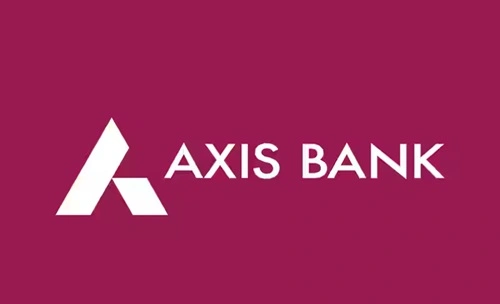As of early 2025, Axis Bank, India’s third-largest private sector bank, has exhibited a mixed financial performance. In the quarter ending December 31, 2024, the bank reported a net profit of ₹6,304 crore, a 4% year-over-year increase. However, this fell short of market expectations due to slower loan growth and higher provisions for bad loans.
The bank’s net interest income rose by 9% to ₹13,606 crore, while the net interest margin decreased to 3.93% from 4.01% in the previous year. Loan growth slowed to 9% year-over-year, down from 11% in the prior quarter. Provisions for potential bad loans more than doubled to ₹2,156 crore, primarily due to slippages in the unsecured retail portfolio.
Strategically, Axis Bank is focusing on digital transformation, investing in technologies such as artificial intelligence, big data, blockchain, and cloud computing to enhance operational efficiency and customer experience.
Despite current challenges, these initiatives aim to position Axis Bank for sustainable growth in India’s evolving banking landscape and here on this page we will discuss in-depth about SWOT Analysis of Axis Bank.
Strengths
- Robust Financial Performance: In the fiscal year ending March 31, 2024, Axis Bank reported a 16% year-on-year growth in net interest income, reaching ₹49,894 crores. The operating revenue increased by 22% to ₹72,336 crores, reflecting strong core business growth.
- Digital Transformation Initiatives: Axis Bank has been at the forefront of digital innovation, with platforms like ‘open’ and ‘NEO’ redefining customer experiences. The bank’s investment in artificial intelligence and data analytics has enhanced operational efficiency and customer engagement.
- Strategic Partnerships and Expansions: The bank increased its stake in Max Life Insurance to 19.99% in June 2024, strengthening its position in the insurance sector. Such strategic investments diversify revenue streams and enhance service offerings.
- Comprehensive Product Portfolio: Axis Bank offers a wide range of financial products and services, including retail banking, corporate banking, and wealth management. This diversification caters to a broad customer base and mitigates risks associated with over-reliance on a single segment.
- Strong Asset Quality Management: Despite challenges, the bank maintained a gross non-performing asset (GNPA) ratio of 1.44% as of September 2024, indicating effective risk management practices.

Weaknesses
- Asset Quality Concerns: In the quarter ending December 31, 2024, Axis Bank faced asset quality issues, with provisions for bad loans more than doubling to ₹21.56 billion. The GNPA ratio slightly increased to 1.46%, reflecting modest deterioration in asset quality.
- Slower Loan Growth: The bank experienced a slowdown in loan growth, reporting a 9% year-on-year increase in loans for the quarter ending December 31, 2024, compared to 11% in the previous quarter. This deceleration may impact future revenue growth.
- Profitability Pressures: In the same quarter, the net interest margin (NIM) declined to 3.93% from 4.01% in the prior year, indicating pressure on profitability.
- Increased Provisions: The bank’s provisions for potential bad loans more than doubled to ₹21.56 billion in the quarter ending December 31, 2024, highlighting vulnerabilities in certain loan segments.
- Market Perception Challenges: Following the release of its quarterly results, Axis Bank’s shares fell to a 14-month low, reflecting investor concerns over asset quality and profitability.
Opportunities
- Expansion in Rural and Semi-Urban Markets: The ‘Bharat Banking’ initiative aims to integrate rural and semi-urban India into the economic fabric, offering tailored financial solutions and tapping into underserved markets.
- Infrastructure Financing: With the Indian government’s increased focus on infrastructure development, Axis Bank’s potential issuance of infrastructure bonds presents an opportunity to support long-term projects and enhance revenue streams.
- Digital Banking Growth: The bank’s emphasis on digital platforms positions it to capitalize on the growing demand for online banking services, attracting tech-savvy customers and reducing operational costs.
- Wealth Management Expansion: Axis Bank’s wealth management franchise manages over ₹5 trillion in assets, making it the third-largest in India. Further expansion in this segment can cater to the growing affluent population.
- Sustainable Finance Initiatives: Aligning with global trends, the bank can develop green financing products, supporting environmentally sustainable projects and attracting ESG-conscious investors.
Threats
- Regulatory Changes: The banking sector is subject to stringent regulations. Any adverse changes in policies, such as increased capital requirements or lending restrictions, could impact profitability and operations.
- Economic Slowdown: A slowdown in the Indian economy could lead to higher default rates, affecting asset quality and increasing non-performing assets.
- Intensifying Competition: With the entry of new players and fintech companies in the banking sector, Axis Bank faces increased competition, potentially impacting its market share.
- Cybersecurity Risks: As the bank expands its digital footprint, the risk of cyber threats increases. Data breaches or cyber-attacks could damage reputation and incur significant costs.
- Interest Rate Fluctuations: Changes in interest rates can affect net interest margins and profitability, especially if the bank cannot adjust lending and deposit rates promptly.
Conclusion
As of 2025, Axis Bank stands as a formidable entity in India’s banking sector, leveraging its strengths in financial performance, digital innovation, and strategic partnerships. However, challenges such as asset quality concerns, slower loan growth, and profitability pressures necessitate proactive measures. By capitalizing on opportunities in rural expansion, infrastructure financing, and digital banking, while mitigating threats through robust risk management and compliance, Axis Bank can navigate the evolving financial landscape and sustain its growth trajectory.
Anantha Nageswaran is the chief editor and writer at TheBusinessBlaze.com. He specialises in business, finance, insurance, loan investment topics. With a strong background in business-finance and a passion for demystifying complex concepts, Anantha brings a unique perspective to his writing.


